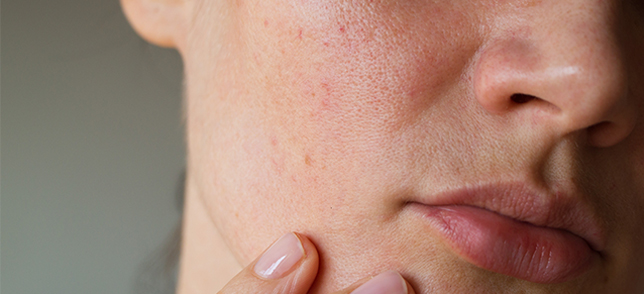The key to comfortable living: perfect room
temperature and humidity
Table of Contents
○ The ideal room temperature for sleeping
○ The perfect room temperature for work
○ The ideal room temperature: men vs. women
○ Health issues associated with low temperature
○ Health issues associated with high temperature
○ What are standard humidity levels?
○ Absolute humidity
○ Relative humidity
○ What’s the ideal humidity level for your home?
○ Health issues associated with low humidity
○ Health issues associated with high humidity
Finding the most comfortable room temperature
Nothing can get under your skin quite like it. When a room isn’t at a comfortable temperature, it can make things difficult. If you’re working, feeling too hot or too cold can never really let you focus on the task at hand. If you’re trying to sleep, the wrong temperature can stop you getting some much-needed rest. The temperature of a room can even affect your health. Here’s what you need to know to ensure your home and office are at a comfortable indoor temperature.

What’s the standard room temperature for a home?
Standard room temperature is generally defined as being at around 20 °C (68°F).*1 But, is that the ideal room temperature? What is the most comfortable temperature?
What’s the ideal room temperature?
It depends on what you’re doing and, surprisingly, on whether you’re a man or a woman.
Keeping your bedroom at a comfortable air temperature is an important contributor to a good night’s sleep. The ideal temperature for sleep is at around 18.3°C (65°F).*2
The perfect room temperature for work

A comfortable office temperature is thought to improve productivity, health and job satisfaction. But there’s a lot of debate among office workers as to what that is. As you know, it can be hard to please everyone when it comes to indoor climate control. In fact, the time wasted in offices on trying to adjust the room temperature throughout the day is thought to cost the UK £13 billion a year. So save yourself time, and money, by adjusting your thermostat setting to a comfortable 22 to 24°C (71.6°F and 75.2°F) when working.*3
The ideal room temperature: men vs. women
The reason why there’s so much debate in the office, and at home, over what’s a comfortable temperature is because there are different ideal temperatures for men and women.*4 Women tend to feel colder due to having a lower metabolic rate (how you produce energy and heat) than men. So, the most comfortable indoor temperature for women is 25°C (77°F). And for men it’s 22.2°C (72°F).*5
*2 https://www.healthline.com/health/sleep/best-temperature-to-sleep
*3 https://www.bbc.com/worklife/article/20160617-the-never-ending-battle-over-the-best-office-temperature
*4 https://www.npr.org/sections/health-shots/2015/08/04/429005094/women-theres-a-reason-why-youre-shivering-in-theoffice
*5 https://www.ahchealthenews.com/2022/10/30/why-are-women-colder-than-men/
How room temperature impacts your health
What might come as a surprise is that room temperature can impact your health too.
The World Health Organisation says that the ideal ambient temperature for humans is at least 18°C (64.4°F), and even higher for more vulnerable groups like the elderly, children, and sufferers of chronic illnesses.*6
Health issues associated with low temperature
- Increased risk of cardiovascular disease*7
- Respiratory conditions worsening
- Inflammation in the lungs
- Problems with circulation*8

Health issues associated with high temperature
- Respiratory conditions worsening
- Problems with blood pressure
- Heat stress symptoms (like headaches, nausea and dizziness)*9
Ways of keeping the perfect room temperature
- Use an HVAC system – Keep a room at a comfortable heat setting with air conditioning, heating or ventilation.
- Use a ceiling fan – It’s not just useful during the hot summer months; some ceiling fans can be set to go clockwise, instead of anticlockwise. This will push warm air back down and pull up cold air.
- Don’t let warm or cold air in – Make sure that there are no gaps in windows or doors that let in the air outside.
- Curtains and blinds – Some rooms get more, or less, sunlight which affects room temperature. Use curtains and blinds to control how much sunshine gets in.*10
> How to optimise temperature and humidity in your home
Finding the perfect humidity level
Do you find the air in some rooms unbearably hot, stuffy and sticky? Chances are that they’re very humid. Like temperature, humidity is also an important part of creating a comfortable environment. But what is humidity exactly? It’s simply the amount of moisture in the air.*11
What are standard humidity levels?
This can be tricky to pinpoint; it really depends on where you live. Some climates in certain countries have a higher level of humidity than others. But there’s an ideal humidity level in the home, which you’ll discover in a moment. Before that, it helps to know the difference between the two major ways of measuring humidity levels: absolute humidity and relative humidity.

Absolute humidity
This is a way of measuring how much water vapour is in the air without taking the air temperature into account. It’s measured in grams of water vapour per cubic metre of air.
Relative humidity
With relative humidity, you measure how much water there is in the air at a certain air temperature. Because air can only hold a particular amount of water vapour at different air temperatures. For example, warmer air can hold more water vapour – so it’s often more humid. But colder temperatures can still be humid, even though it’s not as common. Relative humidity is usually expressed as a percentage.*12
*11 https://education.nationalgeographic.org/resource/humidity
*12 https://www.weather.gov/lmk/humidity
The relationship between comfort, temperature and humidity

Humidity and temperature are linked. A certain temperature can only have so much humidity. So, if the temperature changes, then the humidity level will need to change too so that the environment remains comfortable.
What’s the ideal humidity level for your home?
When it comes to humidity, it’s best to have a balance. Ideally, your home should have humidity levels between 30-50%.*15
*13 https://www.oshatrain.org/courses/pages/711temp.html
*14 https://www.azosensors.com/article.aspx?ArticleID=487
*15 https://www.mayoclinic.org/diseases-conditions/common-cold/in-depth/humidifiers/art-20048021
How humidity impacts your health
If humidity levels in your home are too high, or low, then they can also affect your health.
Health issues associated with low humidity
- Respiratory conditions worsening*17
- Dry skin
- Irritation in the throat and nose
- Itchy eyes*18
- Increased stress
- Dehydration
- More allergies
- Increased risk of infection*19
- May affect sleep quality*20

Health issues associated with high humidity
- Dehydration
- Fatigue
- Heat stroke
- Fainting
- Increased risk of infection
- More allergies
- Muscle cramps*21
*17 https://www.healthline.com/health/dry-air#respiratory-issues
*18 https://www.mayoclinic.org/diseases-conditions/common-cold/in-depth/humidifiers/art-20048021
*19 https://www.healthline.com/health/dry-air#infection
*20 https://www.sciencedirect.com/science/article/pii/S1438463917306946
*21 https://share.upmc.com/2014/06/effects-humidity-body/
How to create ideal humidity levels at home
To keep your home between 30-50% humidity, you can use:
- A humidifier, or dehumidifier – Whichever one you use depends on the levels in your home. You can measure humidity by using a hygrometer. A humidifier and dehumidifier will automatically increase, or reduce, moisture levels in the air. It’s important to keep humidifiers clean, otherwise they can cause health problems.
- Air conditioning – As well as adjusting room temperature, air conditioning can help keep your home at an ideal humidity level.*22
- Damp clothing – If your home is too dry, you can leave wet clothes or towels drying inside to increase humidity. If your home is too humid, try drying your clothes outside when you can.*23
- Plants – Keeping plants inside the home increases humidity levels. If your home is too humid, it’s a good idea to remove a few household plants, if you have them.*24








